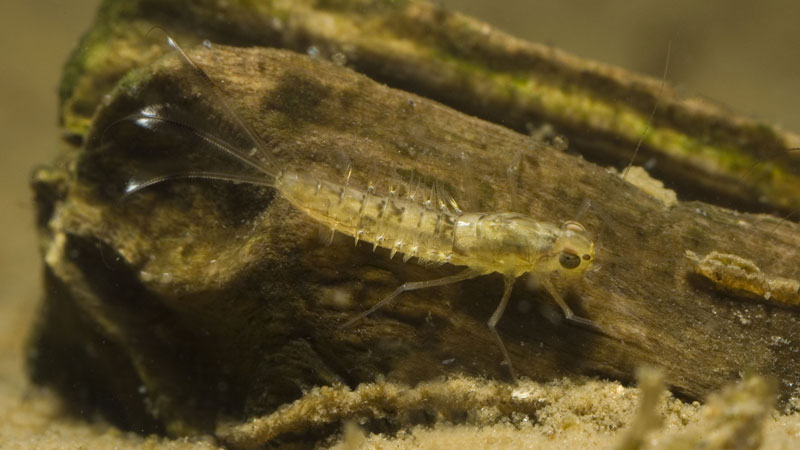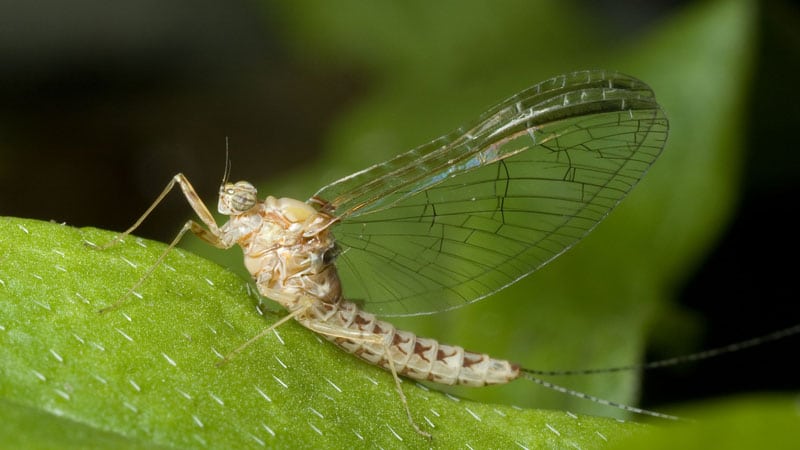New research has disproven a common hypothesis for why mayflies fare worse in warmer waters. Scientists look to mayflies as an early indicator of stream health due to their sensitivity to environmental changes. When stream temperatures rise, often as a result of climate change or thermal pollution or a lack of tree shade, mayflies display poorer growth.
“Cold-blooded aquatic species like mayflies metabolize oxygen faster in warmer temperatures, so it was thought that the increased demand for oxygen exceeded the supply, which in turn resulted in poorer outcomes,” says Research Scientist David Funk of Stroud Water Research Center.
He and fellow scientists Bernard Sweeney and John Jackson, also from the Stroud Center, tested the theory by raising two different mayfly species in high-oxygen environments across a range of temperatures. Surprisingly, despite plenty of oxygen, the mayflies failed to thrive in the hotter waters.


So Funk investigated what would happen in a reduced-oxygen environment. Instead of struggling, the mayflies adapted, growing larger gills to compensate.
The scientists’ findings are the subject of a peer-reviewed article and accompanying feature article in the internationally acclaimed Journal of Experimental Biology, which has previously published the work of Nobel prize winners.
About Stroud Water Research Center
Stroud Water Research Center advances knowledge and stewardship of freshwater systems through global research, education, and watershed restoration and to help businesses, landowners, policymakers, and individuals make informed decisions that affect water quality and availability around the world. Stroud Water Research Center is an independent, 501(c)(3) not-for-profit organization.



